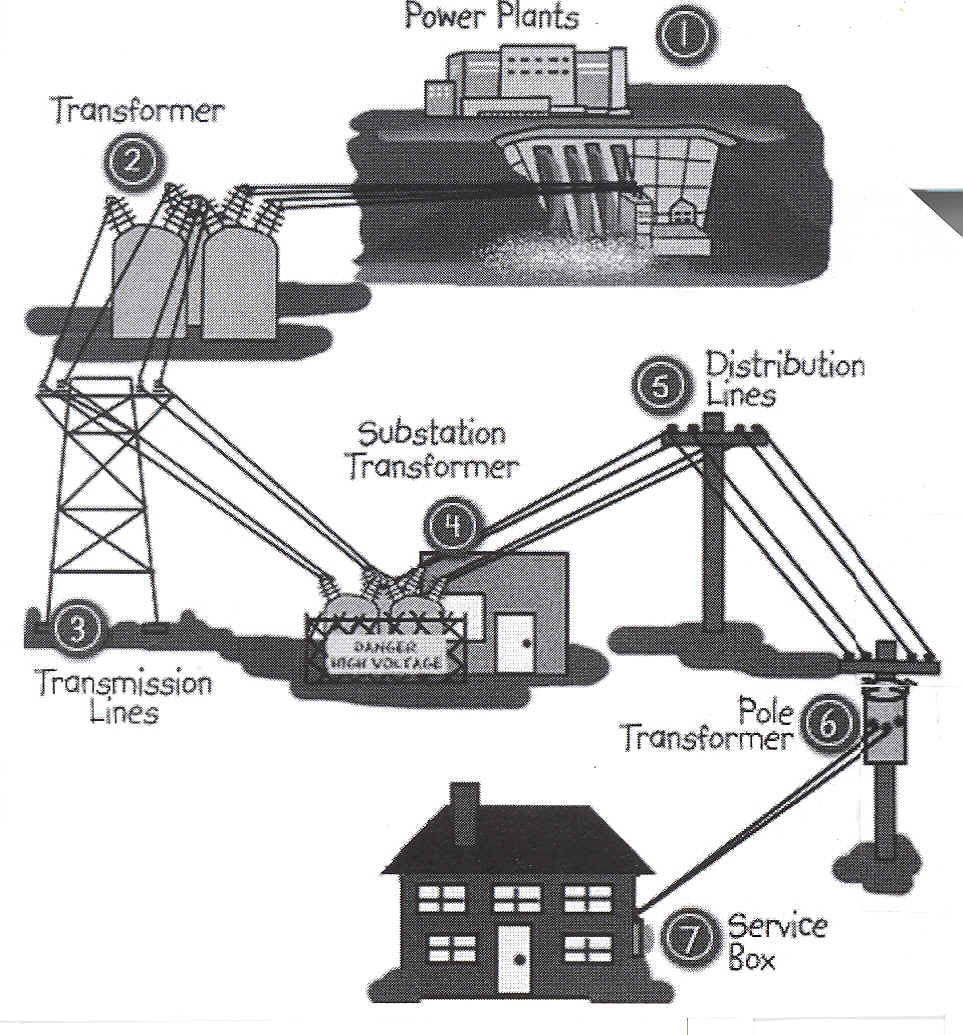
Getting electricity to your home, school, shopping centers, movie theater and even your favorite ball park is called transmission and distribution. Just click on each picture and start your electric journey. Questions

This is where it all starts. There are several ways electricity is made: Steam plants that burn fossil fuels, hydroelectric plants that use water, and nuclear plants that split atoms. Each of these ways produces steam that turns a machine called a turbine. The turbine spins a giant magnet inside a coil of wire. Heat energy in the steam changes to mechanical energy. The mechanical energy produced in the turbine is changed to electrical energy in the generator.
From the power plant, the electricity flows through the wires to a step-up transformer. The transformer raises the pressure of the electricity so it can travel long distances. Voltage is raised up as high as 765,000 volts.
From the transformer, the current then travels through wires to the transmission lines. These high voltage lines can carry large amounts of electricity over long distances.
From the transmission lines the current now goes to a substation transformer. A substation lowers the pressure between 2,000 and 13,000 volts so the electricity can be used by the community.
From the substation the electricity is now ready to be distributed into the community. The current travels from the substation to distribution lines. These lines are sometimes above ground or below ground.
From the distribution lines the electricity now travels to a pole transformer. This type of transformer lowers the pressure once again to 120 to 240 volts for use in your home. In places where the lines are underground, you may see a transformer box instead of a pole.
From the transformer pole or box, the electricity is now ready to travel to your home into a service box. That's where your electric meter is. You're now ready to flick a switch to turn on the lights, or plug in the radio.